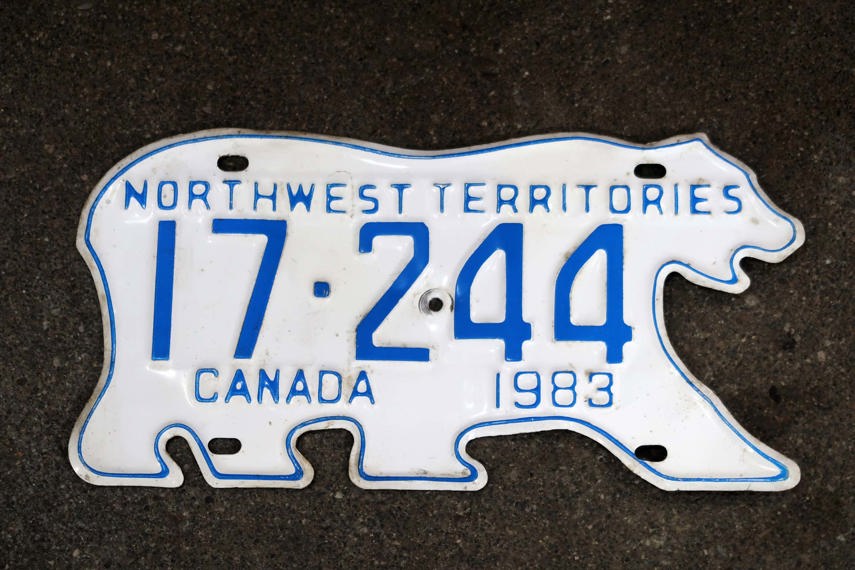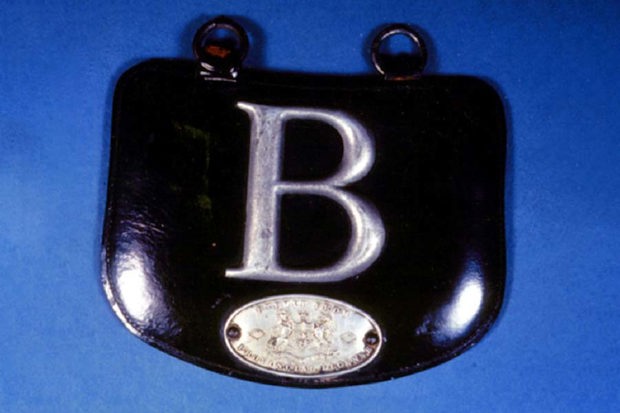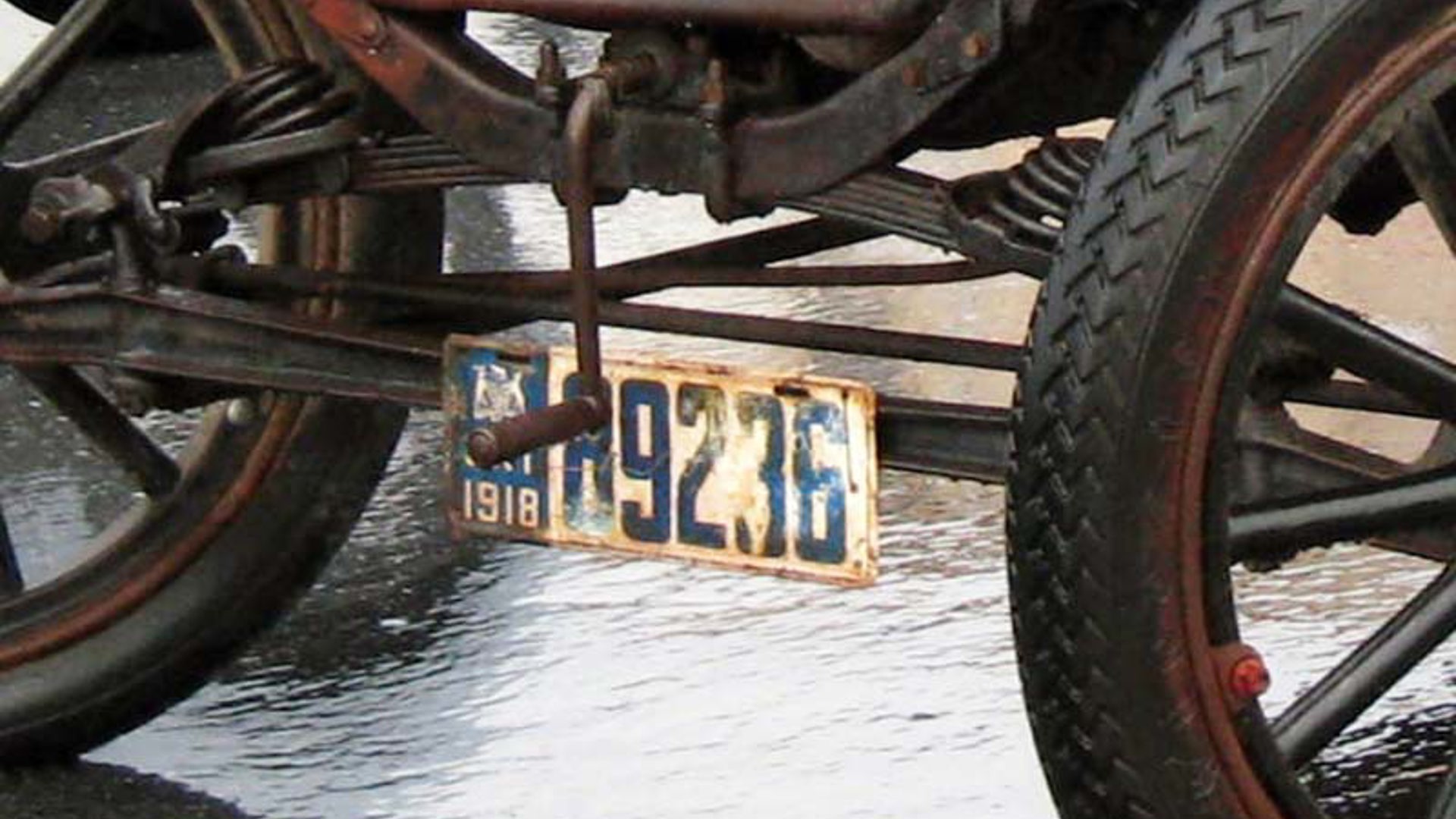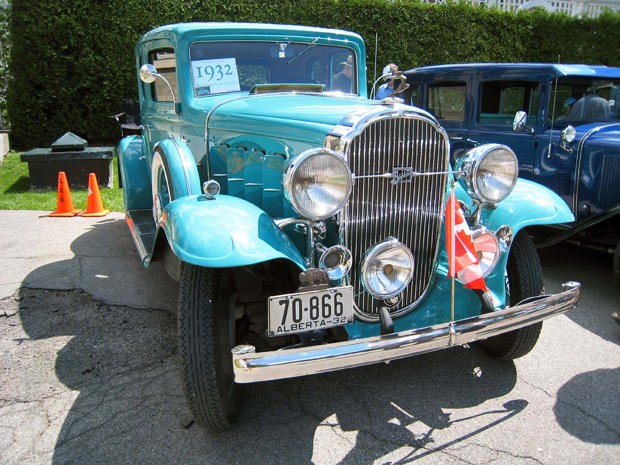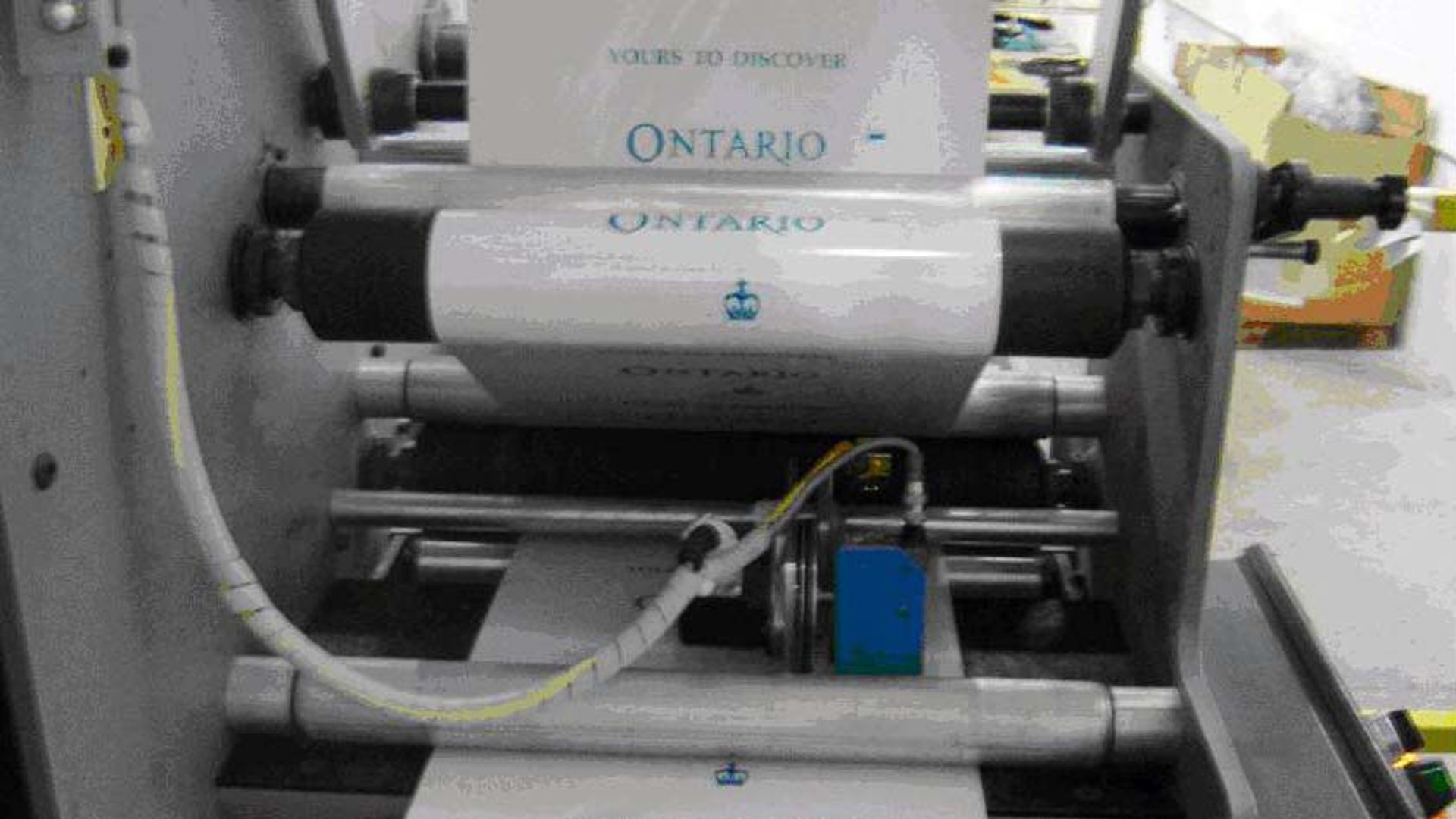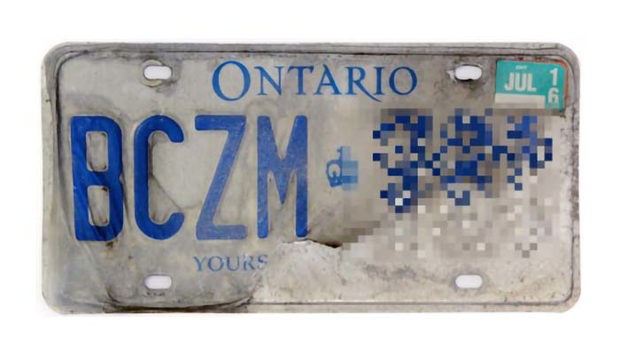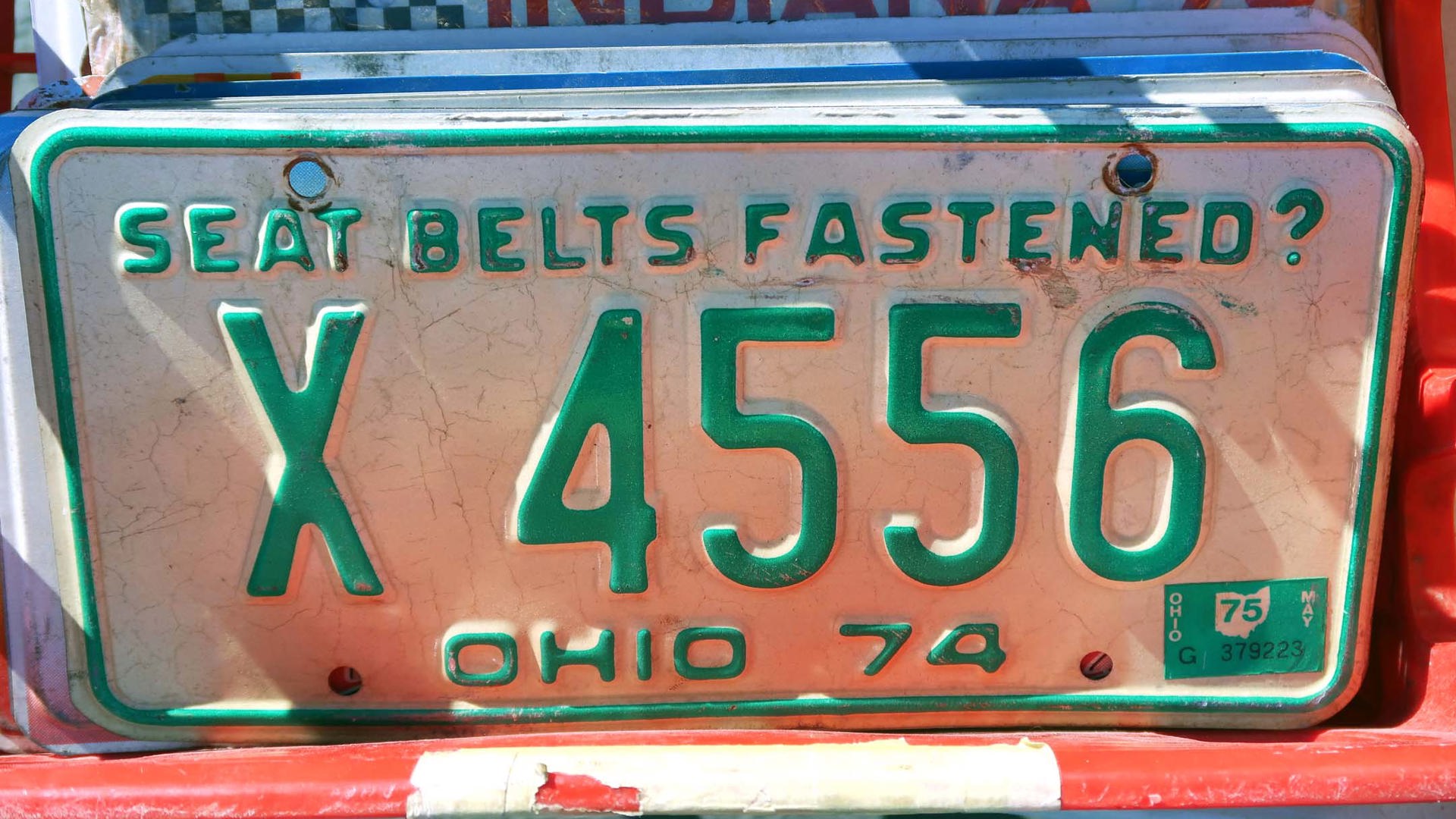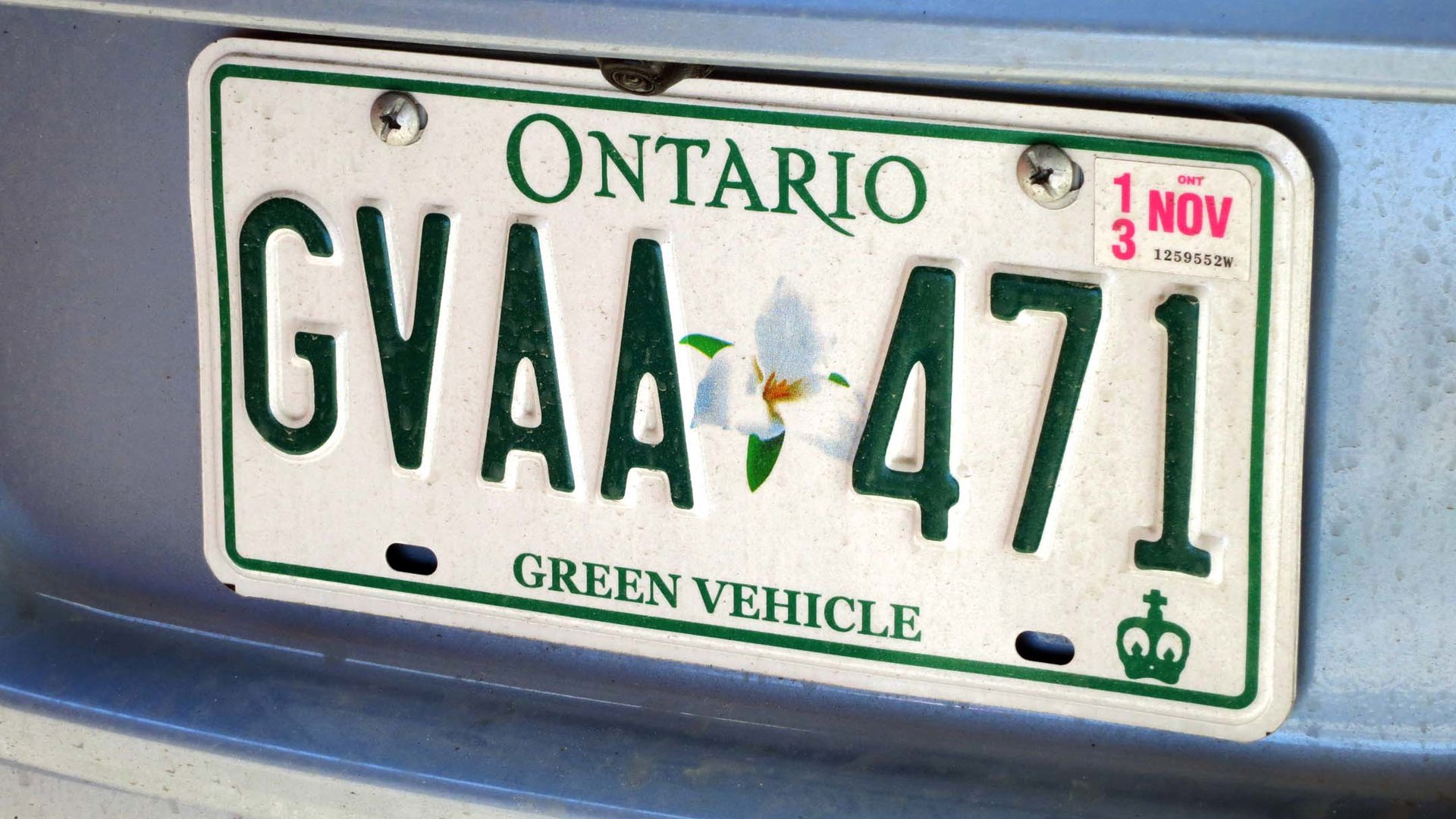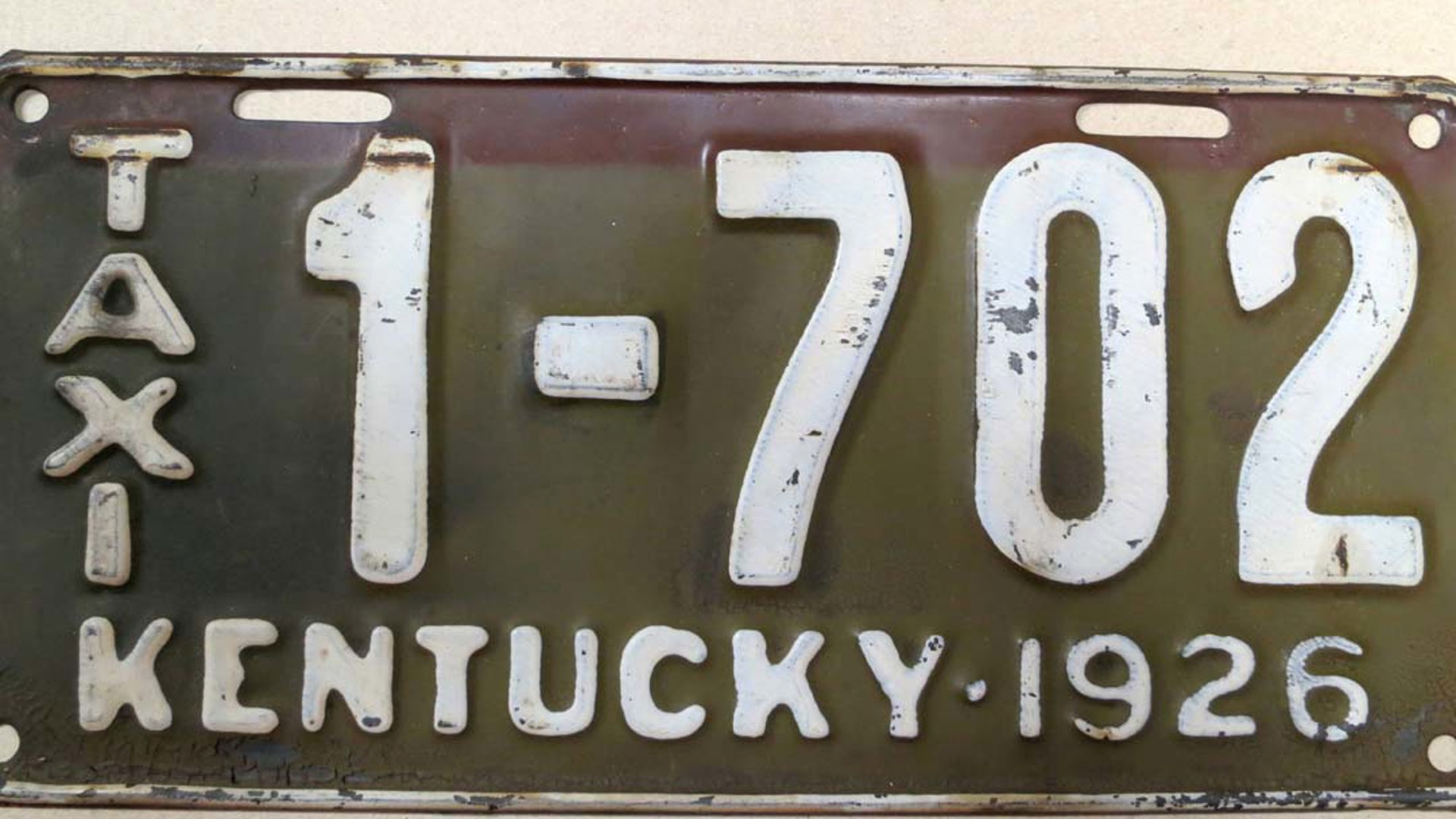You probably only ever consider them when it’s time to renew, but there’s some pretty cool stuff behind how plates came to be, how they’re made, and in some cases, what can go wrong with them.
They’ve been around a long time
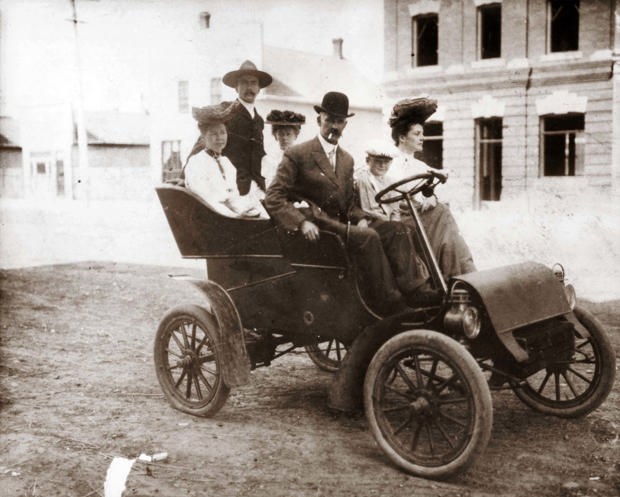
Ontario decided that vehicles needed licence plates in 1903, two years after New York became the first state to require such vehicle registration. The first went to department store heir John Craig Eaton of Toronto. His leather plate, with an aluminum number “1” riveted to it, cost him $2.00 and went on his Winton, a car made in Cleveland, Ohio. It was the first of 198 plates the province issued that year.
Edmonton also decided vehicles needed to be registered in 1903, and Joseph Morris was the first with his new Ford. However, he was merely assigned the number, and it was left up to him to display it. The story goes that when he got a ticket for not doing so, he claimed a broomstick he’d stuck upright in the car made the required numero uno. While no one’s sure if that actually happened, Morris did receive Alberta’s first provincially made licence plate nine years later.
They’ve never really been cheap
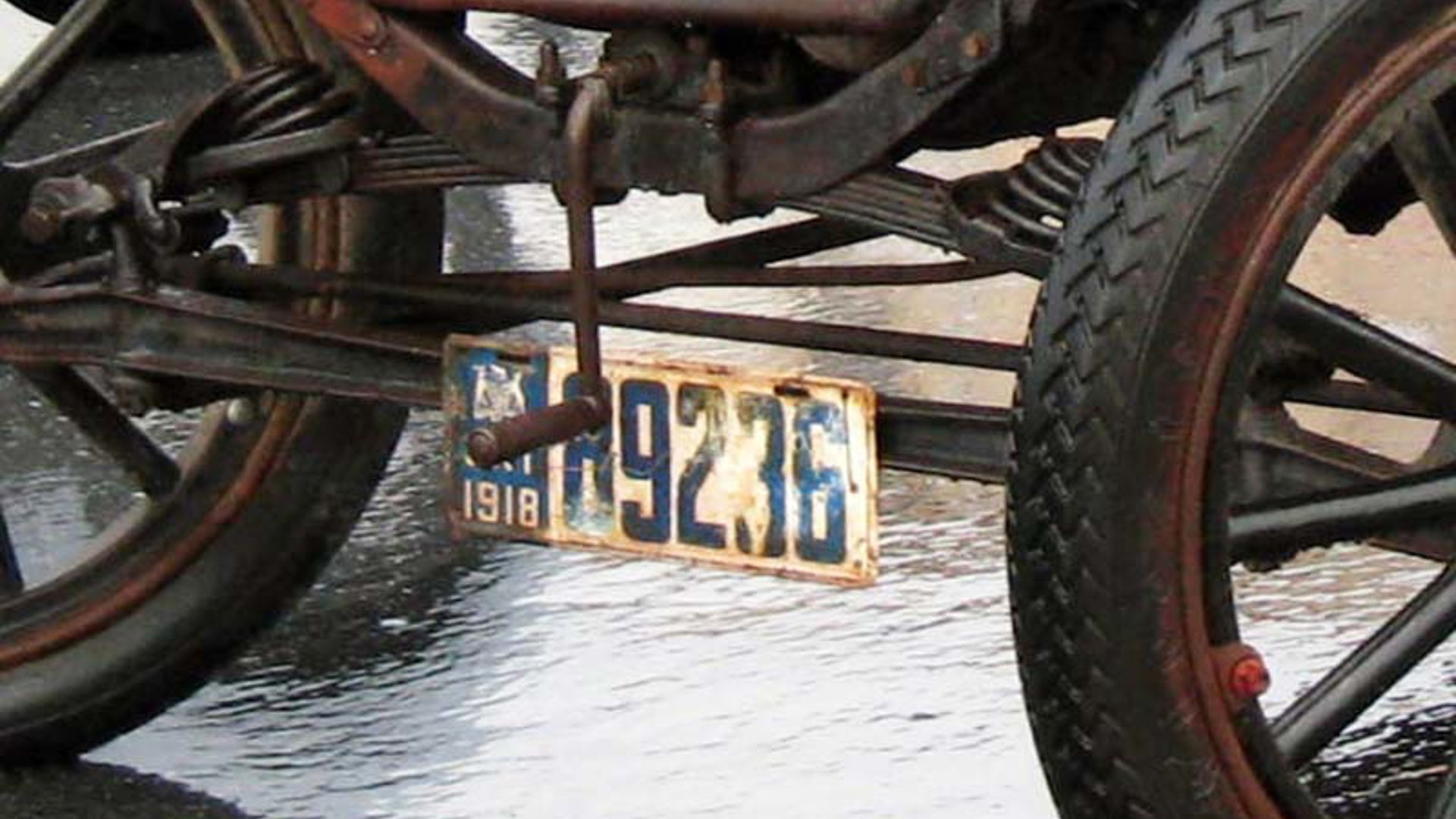
Montreal issued its first vehicle licences in 1904, but while the province had set a cap of $5 per vehicle, the city charged motorists $10 anyway. And in 1915, some drivers in Ontario could pay as much as $20 for their licence plates, at a time when a gallon of gas was only about 24 cents.
They’ve been made out of just about everything
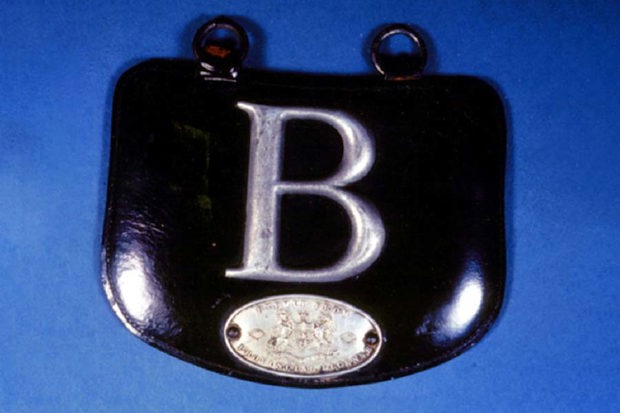
Early licence plates were often made out of rubber or leather, with metal numbers on them. In 1911, Ontario made its plates out of porcelain, but they were easily broken, and the province went to steel plates the following year. When motorists still had to make their own plates, some mail-order companies sold do-it-yourself kits.
During the Second World War, metal was prioritized for the war effort, and some municipalities had to find something else to use for licences. A few states, primarily Illinois and Montana, used a cardboard-like material made from pressed soybean fibre. It worked well under most circumstances, but some rural motorists reported that their plates had been eaten by livestock.
Some licensing departments issued paper stickers that went on the windshield to indicate the plate had been renewed during the war years, since almost all of them issued brand-new plates each year. Others issued small metal renewal tags that were clipped to the old plates.
Yes, they’re made by prisoners
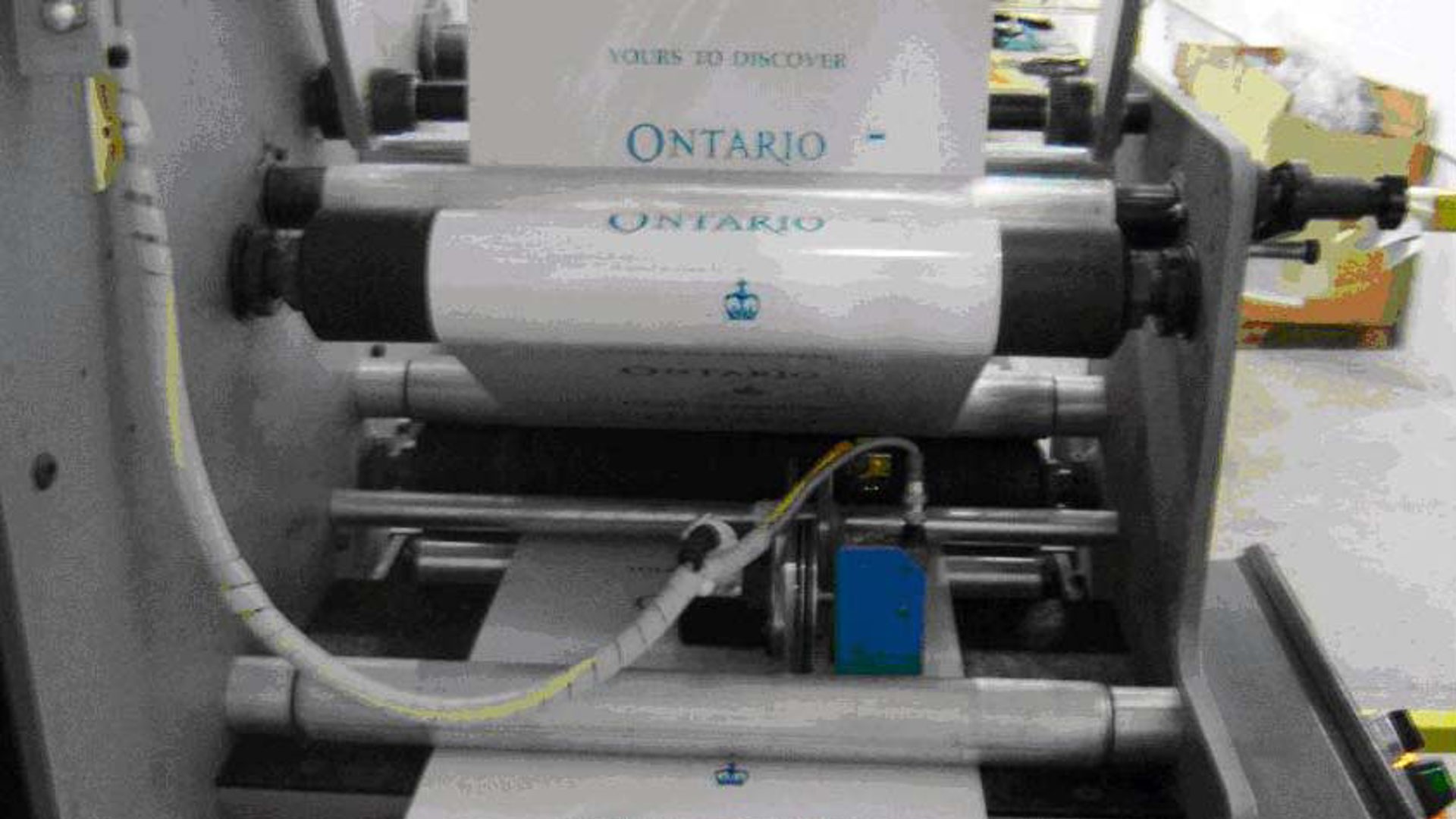
Not everywhere, but in some jurisdictions – including Ontario – licence plates are made behind bars by inmates. The practice began in the United States in the 1920s, as a way to save money and give the convicts something to do. Ironically, they’re made by prisoners in New Hampshire, who must stamp each one with the state’s motto, Live Free or Die.
But some plates are losing their “a peel”
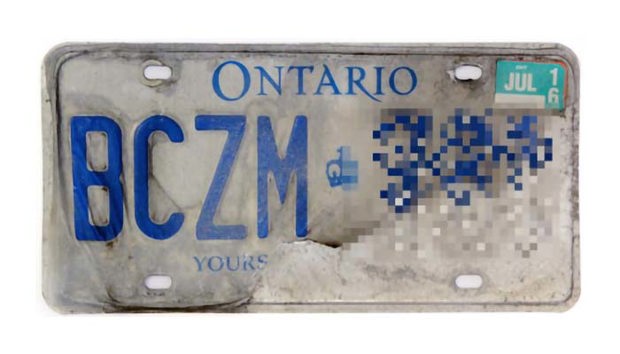
The reflective laminate glued onto metal licence plates is supposed to stay stuck for the life of the plate, but starting around 2012, some Ontario drivers discovered this wasn’t always the case. While no one’s sure exactly why – and it has happened in a few other places as well, including Nova Scotia – the lamination on some plates bubbles or peels off, making the numbers difficult to read.
Ontario requires both front and back plates, so if one’s peeling, both have to be replaced. Drivers who carry on with badly peeling ones run the risk of a ticket for illegible plates. And while the province gives out new ones for free if it’s within the plate’s five-year warranty, drivers have to cough up $59 for replacement if it isn’t.
Yes, size does matter
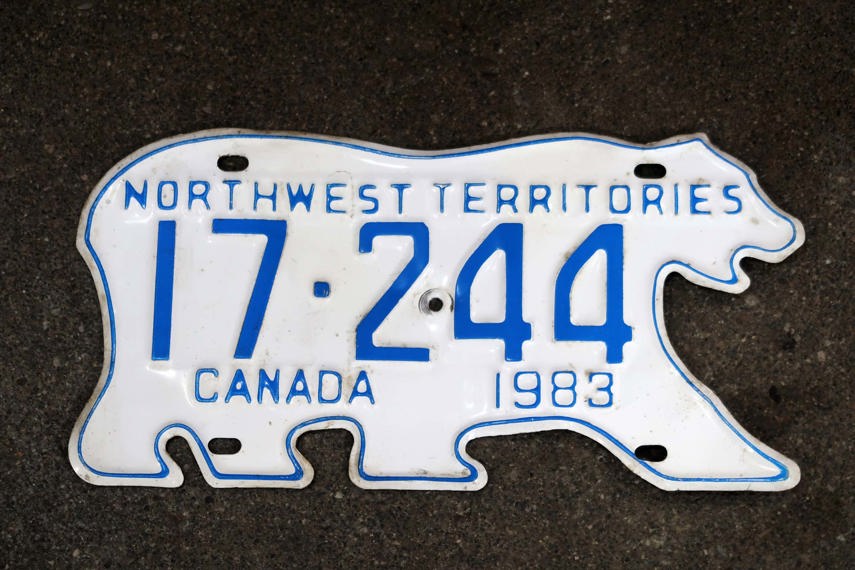
Early plates could be just about any size, depending on what each licensing bureau decided to stamp out. When car designs switched from thin, separately mounted bumpers to larger, integrated ones with a dedicated spot for the plate, it was difficult for automakers to accommodate them all.
In 1957, the U.S. government solved the problem by mandating that all new plates had to be 6 x 12 inches (15 x 30 cm). Even the Northwest Territories’ famous polar bear plate, introduced in 1970, meets the size requirement, and its mounting holes are in the standardized spots.
They have something to say
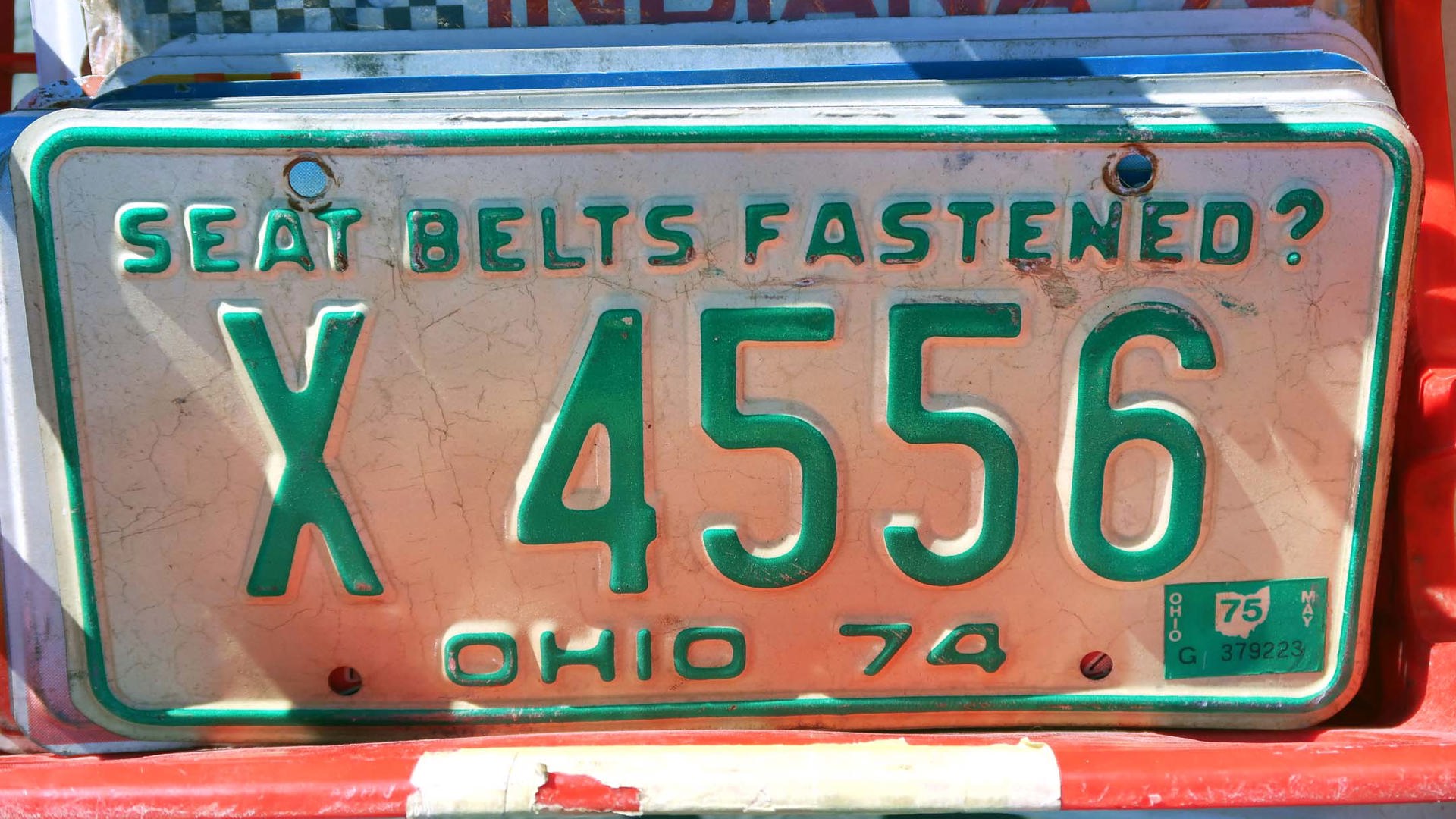
Prince Edward Island was the first province to put a slogan on its licence plates, advertising “Seed Potatoes and Foxes” in 1928. It’s gone through a number of them over the years, including “Garden of the Gulf”, “Home of Anne of Green Gables”, “Garden Province”, and “Seat Belts Save.”
Other provincial slogans, past or present, include “Wild Rose Country” (Alberta), “Keep It Beautiful” (Ontario), “100,000 Lakes” (Manitoba), “Wheat Province” (Saskatchewan), “Canada’s Ocean Playground” (Nova Scotia), “Land of the Midnight Sun” (Yukon), “Canada’s Happy Province” (Newfoundland), and “Picture Province” (New Brunswick).
Quebec’s slogan, “Je me souviens”, translates to “I remember”. Some claim it’s from a poem that translates to “I remember/That born under the lily/I grow under the rose,” and is a political message alluding to Quebec’s growth under British sovereignty.
But many historians say it’s much simpler than that. Eugène-Étienne Taché, the architect who designed Quebec’s Parliament Building in the 1870s, came up with the motto himself and added it below the province’s coat of arms on the façade. Taché later reported to the government that he’d incorporated “all the memories” of Quebec into the building design, and the slogan appears to remind Quebecers to remember also.
They can be pretty specific
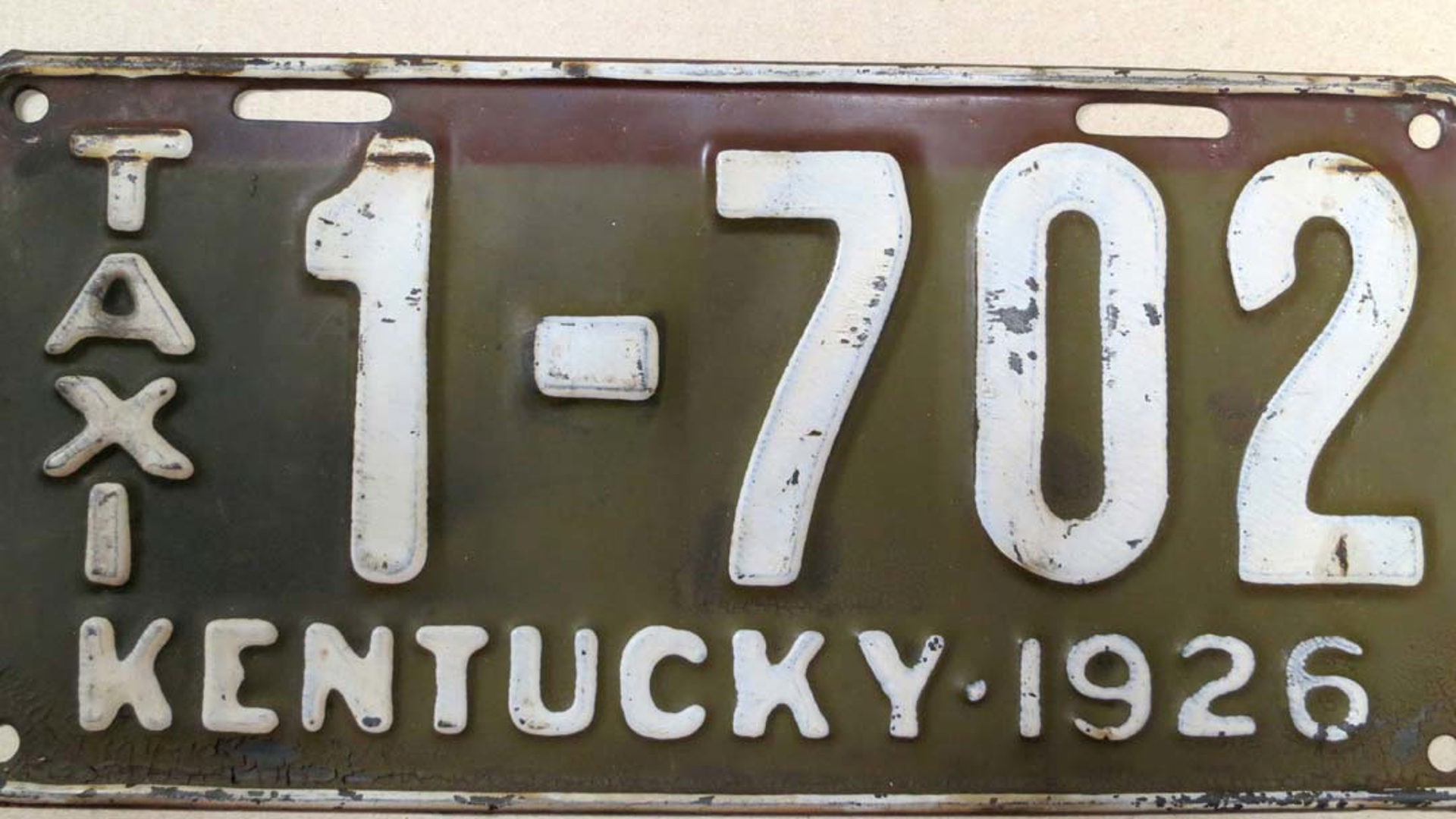
Most jurisdictions set different prices for different licences, depending on the vehicle, and plates are often marked to indicate that the driver has paid the appropriate amount. These can include taxis, haulage, farm or construction vehicles, emergency vehicles, and antique cars. Some licensing departments also issue driver-specific commemorative
plates, such as for war veterans or volunteer firefighters.
They’ve been used for rationing
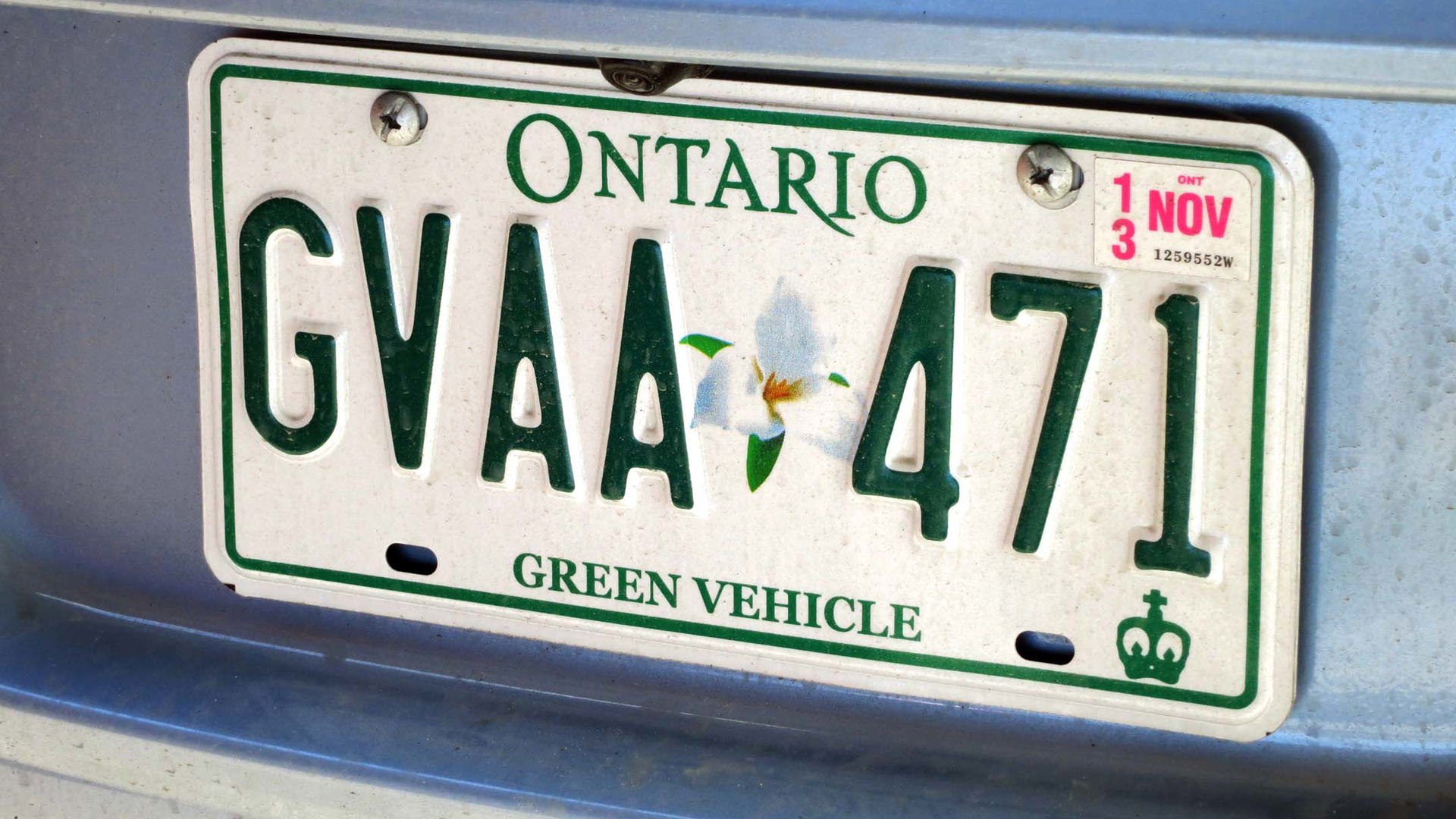
In 1973, Egypt and Syria attacked Israel in the Yom Kippur War. When the Soviet Union backed them, the US pledged emergency aid to Israel. In retaliation, the Organization of the Petroleum Exporting Countries (OPEC) cut off oil to any country supporting Israel.
The embargo sent gas prices soaring in the United States and some stations ran out of fuel, resulting in long lines and short tempers at the pumps. To help ease daily demand, some states implemented an “odd-even” system, where drivers with licence plates that ended in odd or even numbers could only buy gas on odd- or even-numbered days of the month.
You have responsibilities…
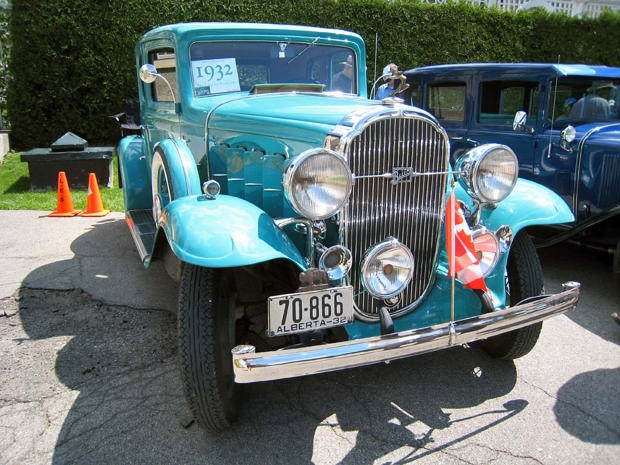
Beyond renewing your licence plate when required, there are rules you must follow to stay within the letter of the law. If you move to another province, then within a specified amount of time, you must register your vehicle with that province’s plate.
The plate must be visible, and too-dark plastic covers, or even a frame that covers any of the information (including the province name) could get you a ticket. And finally, your vehicle’s rear licence plate light must be working, so the plate is visible at night.
